The Way We Wore-250 Years of Irish Clothing
Day 2 -Dublin, National Museum of Ireland
We headed over to the one National Museum of Ireland- Decorative Arts & History location after lunch. I’m impressed that the museums are Free! I think this egalitarian concept prevails throughout much of current Irish society.
The preservation of clothing, however, is largely restricted to the upper classes, due to the poorer people wearing their clothes until they were worn out. In the 18th C. Only the wealthy could afford to wear luxurious dress, but by the late 19th C., prosperous people in towns and villages across all of Ireland could dress fashionably.
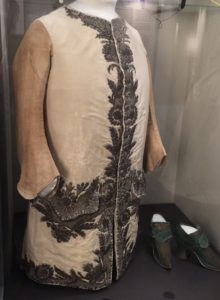
Silk waistcoat embroidered with silver thread in Ireland about 1760.
Having precious metal embroidery on your clothing did come with some risk. ‘Friends’ or staff might cut off threads to steal the expensive metal!

Detail of silver embroidery – silver thread darkens over time. In the 17th C., they would sprinkle hot breadcrumbs over the silver and rub with linen to remove the tarnish.
Lace has been an important industry in Ireland. Many families survived hard times by making lace. There are numerous distinct styles (several of which I hope to see on this trip!
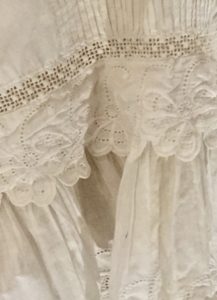
Lace from Woman’s Drawers made in 1880’s Ireland. Women started wearing undergarments that could be ‘drawn on’ in the 1800’s. These had separate legs that were stepped into and tied at the waist with a linen band.
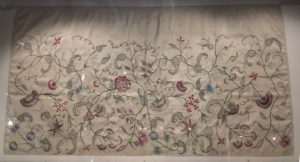
Beautifully embroidered Irish linen apron, 1740’s.
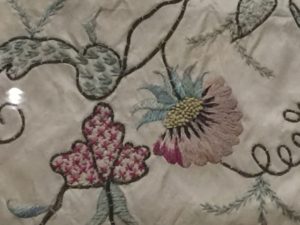
Apron embroidery detail
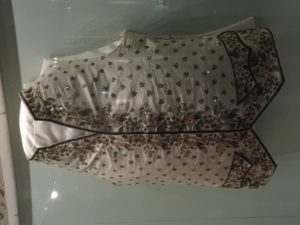
Man’s embroidered waistcoat, Irish 1790’s.
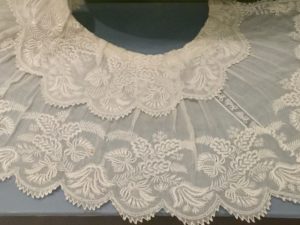
Lace collar worked by a girl in an embroidery class, County Down, Ireland, 1860’s. In the 1840’s, thousands of girls as young as 5 years old worked for pitifully low wages to provide Glasgow merchants stock for London markets. But the meager wages helped some families survive the famines.
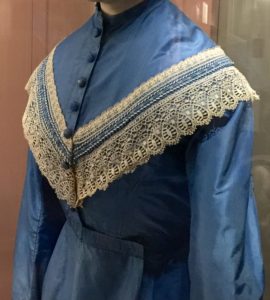
Day gown made in Ballymore Co, Sligo, Ireland about 1867.
This gorgeous blue color of the silk was created using ‘new’ synthetic abalone dyes. The gown remains pristine… Maria Sweeney had the gown made for her brother’s wedding and then also wore it to Mass the Sunday following the wedding. The priest disapproved of the “figure-displaying style” (say, what???) and Maria never wore the gown again!
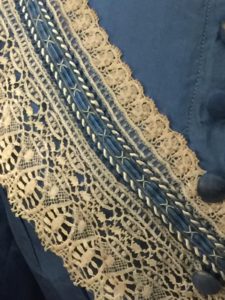
Early Contemporary Machine Lace, about 1867 with wool braid trim.
Next time I’ll share the Irish fashion icon Ib Jorgensen’s couture designs, on special exhibition at the Museum of Decorative Arts.
Slán go fóill!
